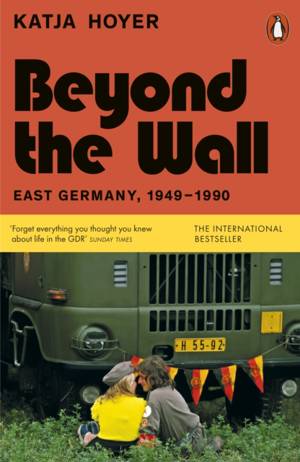
- Afhalen na 1 uur in een winkel met voorraad
- Gratis thuislevering in België vanaf € 30
- Ruim aanbod met 7 miljoen producten
- Afhalen na 1 uur in een winkel met voorraad
- Gratis thuislevering in België vanaf € 30
- Ruim aanbod met 7 miljoen producten
Zoeken
€ 18,45
+ 36 punten
Uitvoering
Omschrijving
In 1990, a country disappeared. When the iron curtain fell, East Germany simply ceased to be. For over forty years, from the ruin of the Second World War to the cusp of a new millennium, the GDR presented a radically different German identity to anything that had come before, and anything that exists today. Socialist solidarity, secret police, central planning, barbed wire: this was a Germany forged on the fault lines of ideology and geopolitics.
In Beyond the Wall, acclaimed historian Katja Hoyer offers a kaleidoscopic new vision of this vanished country. Beginning with the bitter experience of German Marxists exiled by Hitler, she traces the arc of the state they would go on to create, first under the watchful eye of Stalin, and then in an increasingly distinctive German fashion. From the building of the Berlin Wall in 1961, to the relative prosperity of the 1970s, and on to the creaking foundations of socialism in the mid-1980s, Hoyer argues that amid oppression and frequent hardship, East Germany was yet home to a rich political, social and cultural landscape, a place far more dynamic than the Cold War caricature often painted in the West.
In Beyond the Wall, acclaimed historian Katja Hoyer offers a kaleidoscopic new vision of this vanished country. Beginning with the bitter experience of German Marxists exiled by Hitler, she traces the arc of the state they would go on to create, first under the watchful eye of Stalin, and then in an increasingly distinctive German fashion. From the building of the Berlin Wall in 1961, to the relative prosperity of the 1970s, and on to the creaking foundations of socialism in the mid-1980s, Hoyer argues that amid oppression and frequent hardship, East Germany was yet home to a rich political, social and cultural landscape, a place far more dynamic than the Cold War caricature often painted in the West.
Specificaties
Betrokkenen
- Auteur(s):
- Uitgeverij:
Inhoud
- Aantal bladzijden:
- 496
- Taal:
- Engels
Eigenschappen
- Productcode (EAN):
- 9780141999340
- Verschijningsdatum:
- 2/04/2024
- Uitvoering:
- Paperback
- Afmetingen:
- 129 mm x 198 mm
- Gewicht:
- 362 g

Alleen bij Standaard Boekhandel
+ 36 punten op je klantenkaart van Standaard Boekhandel
Beoordelingen
We publiceren alleen reviews die voldoen aan de voorwaarden voor reviews. Bekijk onze voorwaarden voor reviews.











